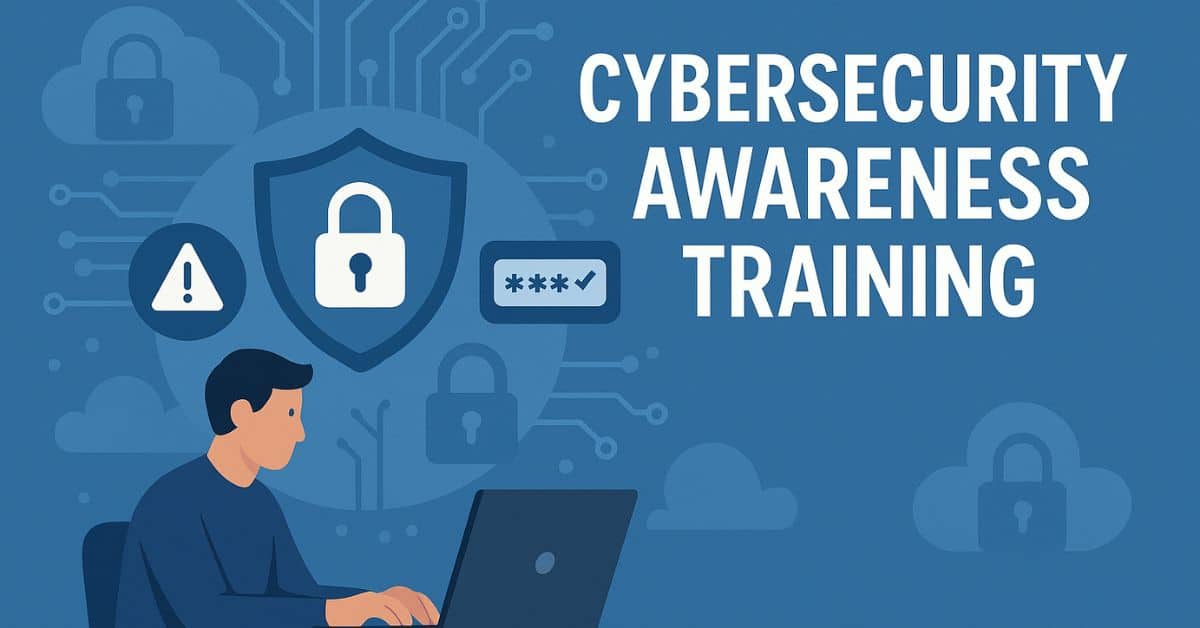Did you know that human factor is responsible for 95% of cybersecurity accidents? Yes, that’s right. An employee can unknowingly click on a link in a phishing email, accidentally reveal confidential information, or simply share a password with someone who’s not supposed to know it. The reality is that you leave trails of data wherever you go, whether browsing at work, shopping online, or scrolling on your phone. Cybercriminals rely on these digital footprints to find vulnerabilities.
According to SecureFrame, cybercrime damages are expected to reach $15.63 trillion by 2029, rising from $10.5 trillion in 2025. In fact, if cybercrime were treated as its own nation, it would rank as the third-largest economy in the world, behind only the United States and China. The numbers are staggering.
But how can employees avoid cybercrime? In this article, we’ll talk about this and more.
Key Benefits of Cybersecurity Awareness Training
Cybersecurity awareness training offers numerous benefits, including a significant reduction in data breaches. Since a staggering number of data breaches result from human error, cybersecurity awareness training is essential in mitigating these risks. Educating employees on best practices leads to a sharp decline in incidents.
Regulatory compliance is another significant benefit. Many industries require security awareness training to meet industry regulations and avoid penalties. Showing that customer data protection measures are in place supports compliance and builds trust with stakeholders.
Organizations with effective cybersecurity training programs report significant reductions in security incidents, which underscores the importance of continuous education. Training keeps employees vigilant, enabling them to recognize and respond to threats before they escalate.
Minimizing risks associated with human error is a cornerstone benefit. While no technological solution can entirely prevent cyber attacks, security awareness training helps employees avoid common pitfalls like phishing scams or mishandling sensitive information and cyber risks to avoid cyber threats.
Evolution of Security Awareness Programs
Security awareness programs have significantly evolved since their inception. Initially focused on compliance, they now prioritize risk management and mitigation.
Today, security awareness training continuously adapts to the evolving threat landscape, supporting incident response exercises and updates. The integration of advanced technology allows training programs to address specific employee weaknesses and current threat scenarios more effectively. As cyber threats become more automated and sophisticated, training programs must stay ahead.
Common Cyber Threats Addressed by Training
Phishing, particularly spear phishing, is among the most common cyber threats addressed by security awareness training. These targeted attacks exploit personal information to deceive specific individuals within organizations, making them highly effective and dangerous. Training helps employees identify and report suspicious activity, crucial for mitigating potential breaches.
Insider threats pose another significant risk, originating from current or former employees who misuse their access to compromise organizational safety. Effective training raises awareness about these threats and encourages prompt reporting.
Social engineering tactics, such as pretexting and baiting, exploit human psychology to gain unauthorized access to information. Training employees to recognize and respond to these tactics is essential for preventing data breaches and other security incidents.
Essential Components of an Effective Security Awareness Program
An effective security awareness program must encompass several key components. Compliance training, security education, and phishing simulations ensure comprehensive coverage of potential threats. Core topics should include phishing, password security, social engineering, and incident reporting, providing employees with the necessary knowledge to protect the organization.
Engagement is crucial for the success of any training program. The user experience should be smooth and efficient to promote high participation rates. Interactive elements, such as audio-visual content, simulated phishing attacks, and assessments, enhance engagement and retention. Additionally, shorter, more frequent training sessions in engaging formats improve retention and effectiveness.
Tailored training initiatives and training courses are another critical aspect. It’s important to address specific vulnerabilities within the organization to allow companies to improve their defense mechanisms against cyber threats. Regular and varied cybersecurity training helps employees stay vigilant against evolving threats and technological changes.
Measuring the Effectiveness of Security Awareness Training
Measuring the effectiveness of security awareness training ensures its impact on reducing cyber threats. Businesses must use various metrics to assess success. Key performance indicators, such as training completion rates and incident reporting percentage, are critical for evaluating the training’s effectiveness.
Tracking click rates on phishing simulations effectively gauges the success of phishing training over time. Regular logging of employees reporting phishing attempts fosters a proactive security culture within an organization. Behavioral metrics should focus on changes in employees’ ability to recognize phishing attempts and their response to common cyber threats post-training.
Role-specific training tailored to different departments allows organizations to measure effectiveness through targeted performance indicators. Companies that provided cybersecurity awareness training during onboarding witnessed a quicker reduction in incidents due to early exposure to best practices.
Building a Positive Security Culture
Building a positive security culture is foundational to effective cybersecurity. Leadership commitment is crucial; executives must embed cybersecurity into business strategies to influence the organization’s culture. A strong culture of cybersecurity literacy encourages all employees to actively participate in safeguarding company data.
Employees need to feel integral to security efforts, understanding their role in safeguarding the organization. Trust and openness in the workplace encourage reporting of security incidents without fear of punishment. A successful security culture is shaped by employee attitudes toward cybersecurity, affecting compliance with security practices.
Reduction in policy violations can reflect successful changes in employee behavior due to effective security awareness training. Regular assessment of security culture through surveys gauges employee engagement and awareness regarding security practices.
Customizing Training for Different Roles
Customizing security awareness training for different roles within the organization addresses specific responsibilities and challenges. Role-based training fits the unique needs of each position, ensuring all employees are equipped to handle their respective security challenges.
For example, different employee groups require specialized training to train employees:
- Finance employees require training focused on identifying financial scams.
- HR staff need to learn how to securely manage sensitive employee data.
- Executives, often targeted by advanced phishing schemes, require specialized training to identify and respond to these threats.
Customizing training ensures all employees are prepared to handle role-specific threats.
Tools and Resources for Security Awareness Training
Building strong security habits isn’t just about having the right technology — it’s about helping people understand risks and respond correctly. Effective security awareness training uses the right mix of tools, resources, and hands-on learning to turn cybersecurity from a confusing concept into a daily practice.
Below are some of the most valuable tools and resources organizations and individuals can use to strengthen online safety skills.
1. Security Awareness Training Platforms
These all-in-one solutions offer structured lessons, simulations, analytics, and reporting.
Examples of what they typically include:
- Interactive modules (videos, quizzes, role-play)
- Phishing and social engineering simulations
- Policy tracking and compliance reminders
- Tailored learning paths for different roles
These platforms help organizations keep training consistent, engaging, and measurable.
2. Password Management Tools
Strong passwords are foundational to security, and password managers make that easy.
Benefits:
- Random, complex password generation
- Secure storage across devices
- Reduced reuse of weak or duplicate passwords
- Automated alerts if accounts are compromised
Training people to use password managers significantly reduces vulnerability.
3. Device and Network Security Tools
Hands-on tools help reinforce safe digital behaviors.
Key resources:
- Antivirus/anti-malware software
- Firewall tools
- Virtual Private Networks (VPNs)
- Browser extensions that warn users about unsafe sites
Training should include how to use these and why they matter.
Let’s Sum It All Up
Security awareness training is a critical component of any organization’s cybersecurity strategy. It transforms employees into a human firewall, reducing the risk of data breaches and enhancing overall security posture. Effective training programs are interactive, engaging, and tailored to meet the specific needs of different roles within the organization.
Regular assessment and continuous improvement of training programs are essential for maintaining their effectiveness. By fostering a positive security culture and leveraging the right tools and resources, organizations can significantly enhance their defenses against cyber threats.


















